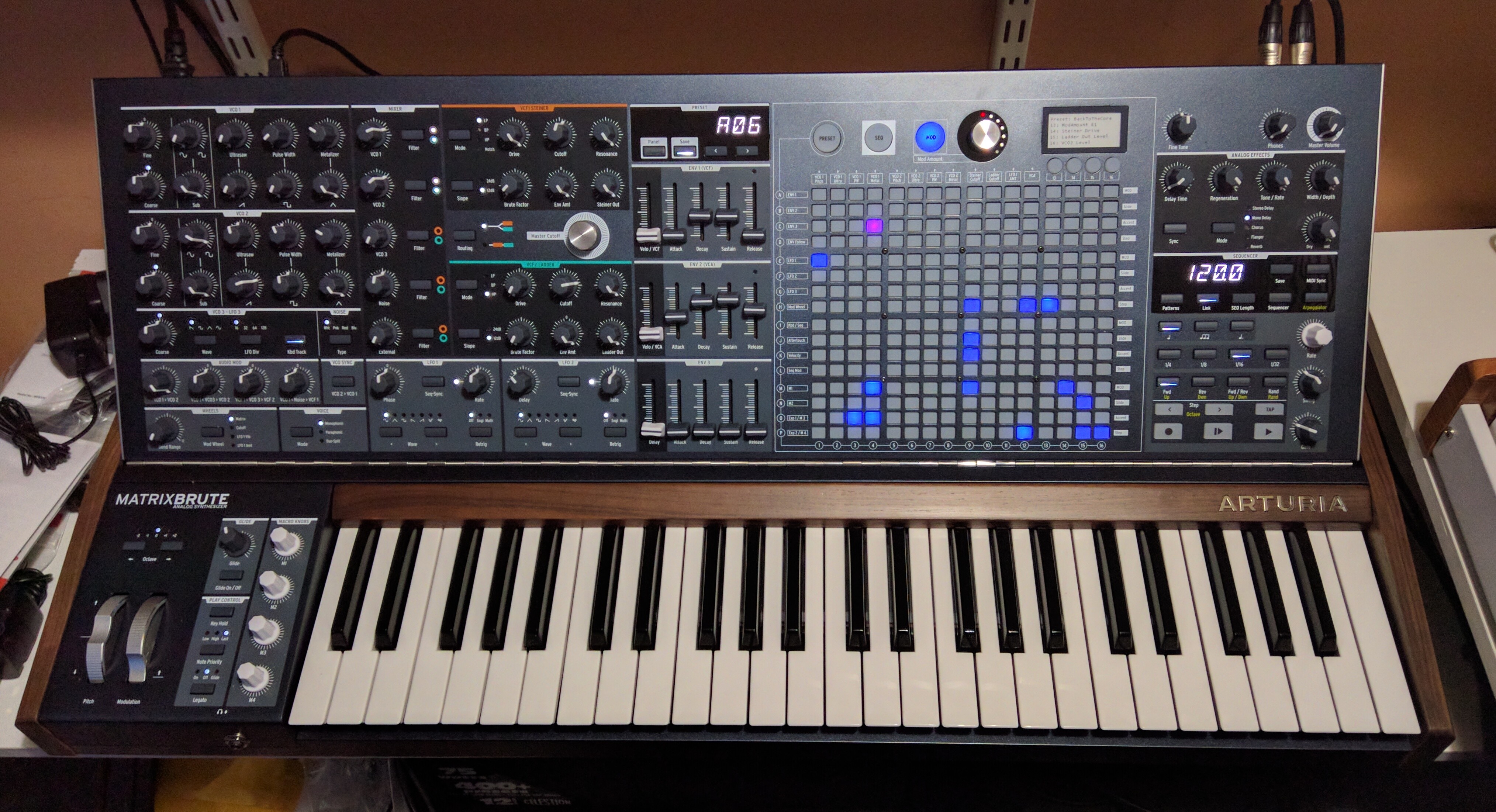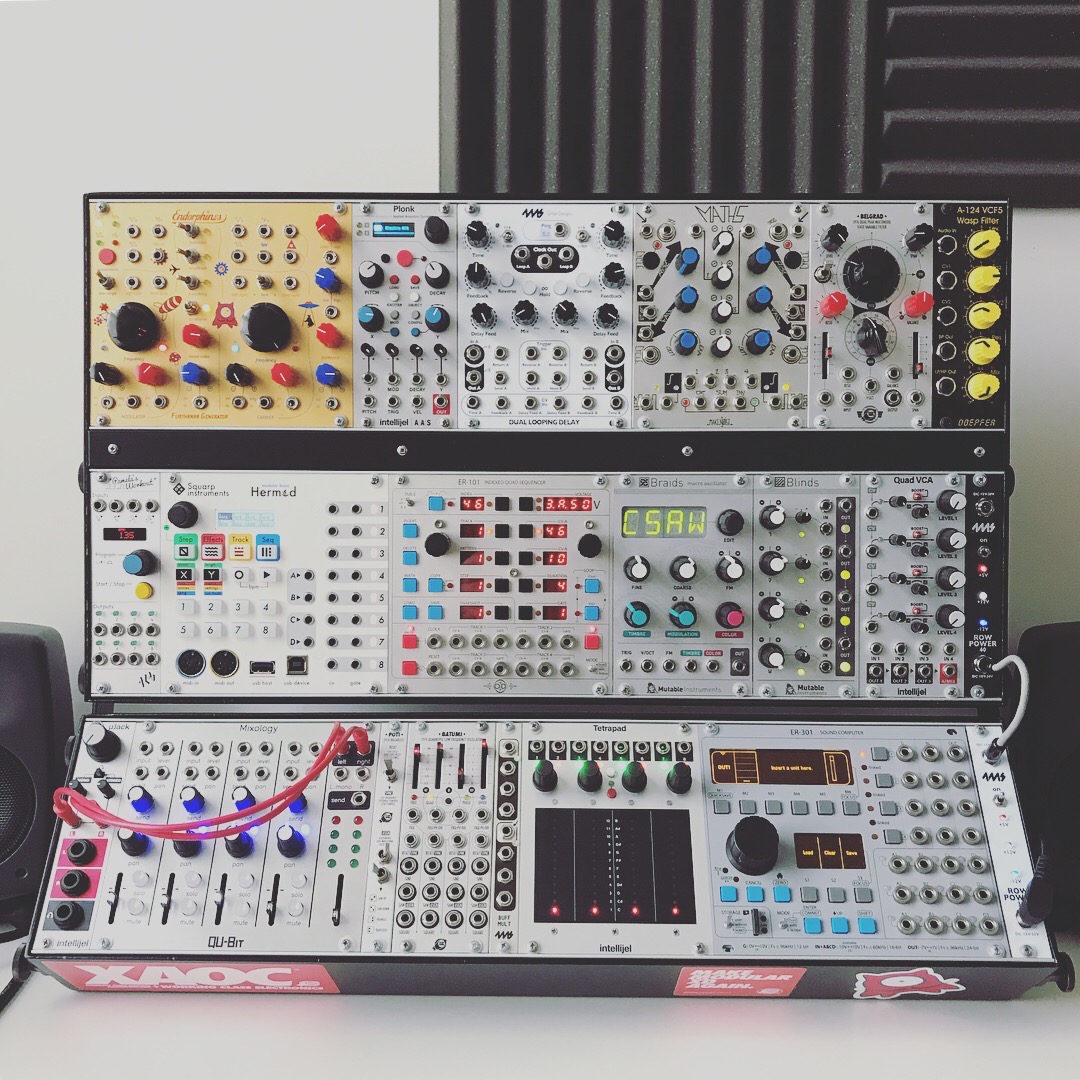|
Arturia
Arturia is a French electronics company founded in 1999 and based in Grenoble, France. The company designs and manufactures audio interfaces and electronic musical instruments, including software synthesizers, drum machines, analog synthesizers, digital synthesizers, MIDI controllers, Music sequencer, sequencers, and mobile apps. History Arturia was founded in 1999 in Grenoble by INPG engineers Frédéric Brun and Gilles Pommereuil to create affordable software synthesizers. Their first product was Storm, a software synthesizer, virtual instrument workstation. The Synthesiser clone, close emulation of classic analog synthesizers helped the company gain popularity in its market. Brun and Pommereuil developed new software algorithms that create sounds with minimal digital artifacts. Arturia worked with Robert Moog in 2003 to create the Modular V softsynth, which uses Arturia's True Analog Emulation (TAE) to faithfully reproduce the oscillators, filters, and other modules from the ... [...More Info...] [...Related Items...] OR: [Wikipedia] [Google] [Baidu] |
MiniBrute
The Arturia MiniBrute is a synthesizer manufactured by Arturia. Although the MiniBrute was the first piece of analog hardware created by Arturia—which had previously exclusively marketed software synthesizers—it generated strong sales. The MiniBrute takes some cues from vintage monophonic synthesizers, such as the Roland SH-101 and Minimoog. However, it also incorporates modern technology to increase its versatility, stability and depth of sound. The synthesizer uses a single, highly shapeable oscillator, which can be processed through a multimode Steiner filter and multiple LFOs. Background Before releasing the MiniBrute, Arturia was known for its affordable software synthesizers. These were generally faithful software emulations of classic analog synthesizers, such as the Moog 3C and Moog 55. The MiniBrute was the first piece of analog hardware manufactured by Arturia. Following the 2010 NAMM Show, Arturia CEO Frédéric Brun began to receive word that American customers ... [...More Info...] [...Related Items...] OR: [Wikipedia] [Google] [Baidu] |
Arturia MicroFreak
The MicroFreak is a synthesizer manufactured by French music technology company Arturia and released in 2019. Described as a "Hybrid Experimental Synthesizer", it uses 18 digital sound engines (algorithms) to synthesize raw tones. This digital oscillator is then fed into a multi-mode analog filter, giving the MicroFreak its hybrid sounds. Sound engines The MicroFreak has 22 distinct sound engines (as of the 5.0 update), which are: *Basic Waves – a standard synth voice using traditional waveforms *Super Wave – a group of detuned waves (like a supersaw), *Harmonic – a form of additive synthesis where you set volumes of frequencies individually, * Karplus-Strong – a physical modelling system to replicate string sounds, * Wavetable – a method of synthesis where the waveform transitions through a table of different waveforms, *Noise – various types of noise and static. * Virtual Analogue – a standard subtractive synth voice, *Waveshaper – a triangle wave that is rep ... [...More Info...] [...Related Items...] OR: [Wikipedia] [Google] [Baidu] |
Roland Jupiter-8
The Jupiter-8, or JP-8, is an eight-voice polyphonic analog subtractive synthesizer introduced by Roland Corporation in early 1981. The Jupiter-8 was Roland's flagship synthesizer for the first half of the 1980s. Approximately 3,300 units have been produced. Although it lacked the soon-to-be standard of MIDI control, later production series of the Jupiter-8 did include Roland's proprietary Digital Control Bus, DCB interface. The instrument had many advanced features for its time, including the ability to split the Electric keyboard, keyboard into two zones, with separate patch (synthesizer), patches active on each zone. Two years after the release of the Jupiter-8, Roland released the more affordable Roland Jupiter-6, Jupiter-6 synthesizer with built-in MIDI control but an otherwise slightly reduced set of features. In 2011, three decades after the release of the original Jupiter series, Roland released the fully digital Roland Jupiter-80, Jupiter-80 and Roland Jupiter-50, Jupi ... [...More Info...] [...Related Items...] OR: [Wikipedia] [Google] [Baidu] |
Eurorack
Eurorack is a modular synthesizer format originally specified in 1995 by Doepfer Musikelektronik. It has since grown in popularity, and has become a dominant hardware modular synthesizer format, with over 15,000 modules available from more than 600 different manufacturers ranging from DIY kits and boutique, cottage-industry designers to well-known, established synth mass-manufacturers like Moog and Roland. Compact size, 3.5mm mono jacks and cables for patching all signals, and lack of a visual or sonic aesthetic defined by one manufacturer sets Eurorack apart from other modular synthesizer formats, and these factors have contributed to the popularity of Eurorack among both manufacturers and musicians. History Before Eurorack, in the late 1970s, several modular systems based on the industrial “Euro” card frames appeared: * Elektor Formant (3U or 6U × 7HP, 3.5 mm jacks, 31-pin bus, ±15 V) * BME PM10/Axiom (3U × 8HP, RCA/Phono jacks, 31-pin bus, ±15 V) * T ... [...More Info...] [...Related Items...] OR: [Wikipedia] [Google] [Baidu] |
MIDI Keyboard
A MIDI keyboard or controller keyboard is typically a piano-style electronic musical keyboard, often with other buttons, wheels and sliders, used as a MIDI controller for sending Musical Instrument Digital Interface (MIDI) commands over a USB or MIDI 5-pin cable to other musical devices or computers. MIDI keyboards lacking an onboard sound module cannot produce sounds themselves, however, some models of MIDI keyboards contain both a MIDI controller and sound module. When it is used as a MIDI controller, MIDI information on keys or buttons the performer has pressed is sent to a receiving device capable of creating sound through modeling synthesis, sample playback, or an analog hardware instrument. The receiving device could be: *a computer running a digital audio workstation (DAW) or a standalone audio plugin (alternatively, the computer could be used to re-route the MIDI signal to other devices) *a sound module *a digital (digital piano/stage piano) or analog (synthesizer) h ... [...More Info...] [...Related Items...] OR: [Wikipedia] [Google] [Baidu] |
Sequential Circuits Prophet-5
The Prophet-5 is an analog synthesizer manufactured by the American company Sequential. It was designed by Dave Smith and John Bowen in 1977. It was the first polyphonic synthesizer with fully programmable memory. Before the Prophet-5, synthesizers required users to adjust controls to change sounds, with no guarantee of exactly recreating a sound. Sequential used microprocessors to allow users to recall sounds instantly rather than having to recreate them manually. The Prophet-5 facilitated a move from synthesizers creating unpredictable sounds to producing "a standard package of familiar sounds". The Prophet-5 became a market leader and was widely used in popular music and film soundtracks. In 1981, Sequential released a 10-voice, double-keyboard version, the Prophet-10. Sequential introduced new versions in 2020, and it has been emulated in software synthesizers and hardware. Sequential also released several further Prophet synthesizers, such as the Prophet '08. Develop ... [...More Info...] [...Related Items...] OR: [Wikipedia] [Google] [Baidu] |
ARP 2600
The ARP 2600 is a subtractive synthesizer first produced by ARP Instruments in 1971. History Developed by a design team headed by ARP namesake Alan R. Pearlman and engineer Dennis Colin, the ARP 2600 was introduced in 1971 as the successor to ARP's first instrument, the ARP 2500, at a retail price of US$2600. Unlike fully modular synthesizers, which often required modules to be purchased individually and wired by the user, the 2600 is semi-modular with a fixed selection of basic synthesizer components internally pre-wired. It sports clear text labels and front panel screen printed graphics indicating the function of different sections of controls, and the signal flow between them. The 2600 is thus ideal for musicians new to synthesis, due to its ability to be operated without patch cords, while still offering greater flexibility to sound designers who are comfortable using them. On its initial release it was heavily marketed to high schools and universities. Features and arc ... [...More Info...] [...Related Items...] OR: [Wikipedia] [Google] [Baidu] |
Synthesiser Clone
A synthesizer (also synthesiser or synth) is an electronic musical instrument that generates audio signals. Synthesizers typically create sounds by generating waveforms through methods including subtractive synthesis, additive synthesis and frequency modulation synthesis. These sounds may be altered by components such as filters, which cut or boost frequencies; envelopes, which control articulation, or how notes begin and end; and low-frequency oscillators, which modulate parameters such as pitch, volume, or filter characteristics affecting timbre. Synthesizers are typically played with keyboards or controlled by sequencers, software or other instruments, and may be synchronized to other equipment via MIDI. Synthesizer-like instruments emerged in the United States in the mid-20th century with instruments such as the RCA Mark II, which was controlled with punch cards and used hundreds of vacuum tubes. The Moog synthesizer, developed by Robert Moog and first so ... [...More Info...] [...Related Items...] OR: [Wikipedia] [Google] [Baidu] |
INPG
The Grenoble Institute of Technology (Grenoble INP) (''Institut polytechnique de Grenoble'' , ''Groupe Grenoble INP'' and before INPG) is a French technological university system consisting of eight engineering and management schools. Grenoble INP also has a two-year preparatory class program, an adult education department, as well as 21 laboratories and a graduate school in Engineering Sciences. More than 1,100 engineers graduate every year from Grenoble INP, making it France's biggest ''grande école''. Most of Grenoble INP is located in Grenoble, except for the ESISAR which is located in Valence. History Grenoble INP was born in the Alpine environment. It was officially founded in 1900 with the creation of the Electrical Engineering Institute. Industrial pioneers of a century ago found that after mastering hydraulic power and creating the initial industrial applications, they had also created a need for well-trained engineers. The first of its type in France, Grenoble INP ... [...More Info...] [...Related Items...] OR: [Wikipedia] [Google] [Baidu] |
Synthesizer
A synthesizer (also synthesiser or synth) is an electronic musical instrument that generates audio signals. Synthesizers typically create sounds by generating waveforms through methods including subtractive synthesis, additive synthesis and frequency modulation synthesis. These sounds may be altered by components such as filters, which cut or boost frequencies; envelopes, which control articulation, or how notes begin and end; and low-frequency oscillators, which modulate parameters such as pitch, volume, or filter characteristics affecting timbre. Synthesizers are typically played with keyboards or controlled by sequencers, software or other instruments, and may be synchronized to other equipment via MIDI. Synthesizer-like instruments emerged in the United States in the mid-20th century with instruments such as the RCA Mark II, which was controlled with punch cards and used hundreds of vacuum tubes. The Moog synthesizer, developed by Robert Moog and first so ... [...More Info...] [...Related Items...] OR: [Wikipedia] [Google] [Baidu] |









